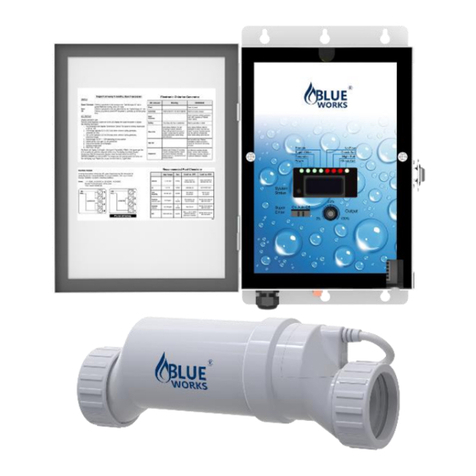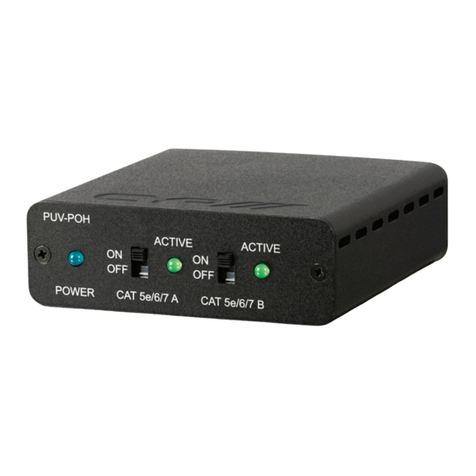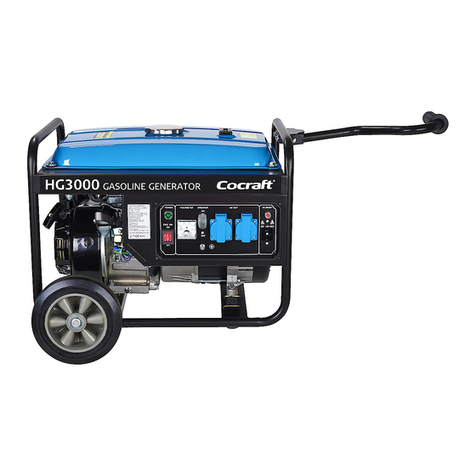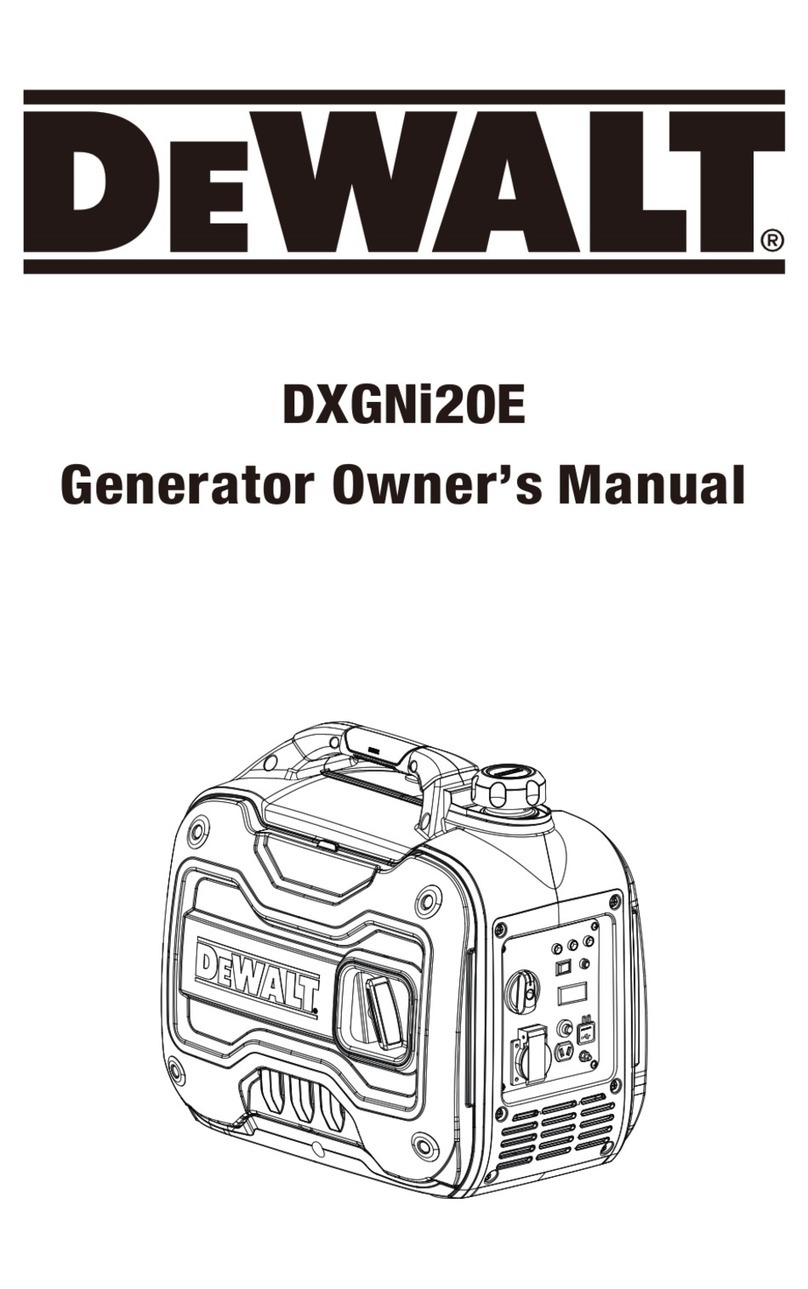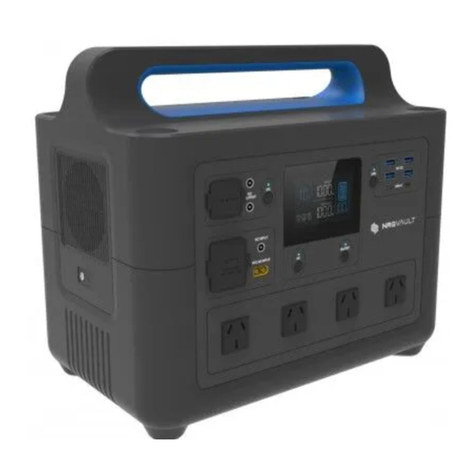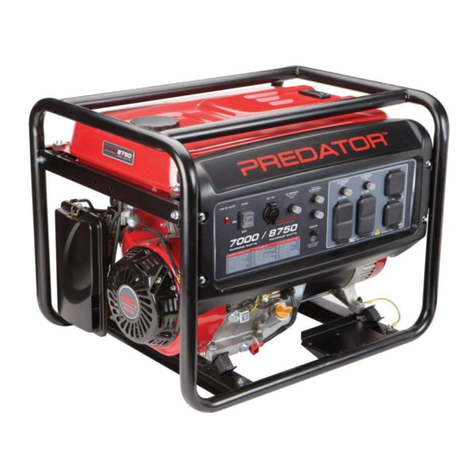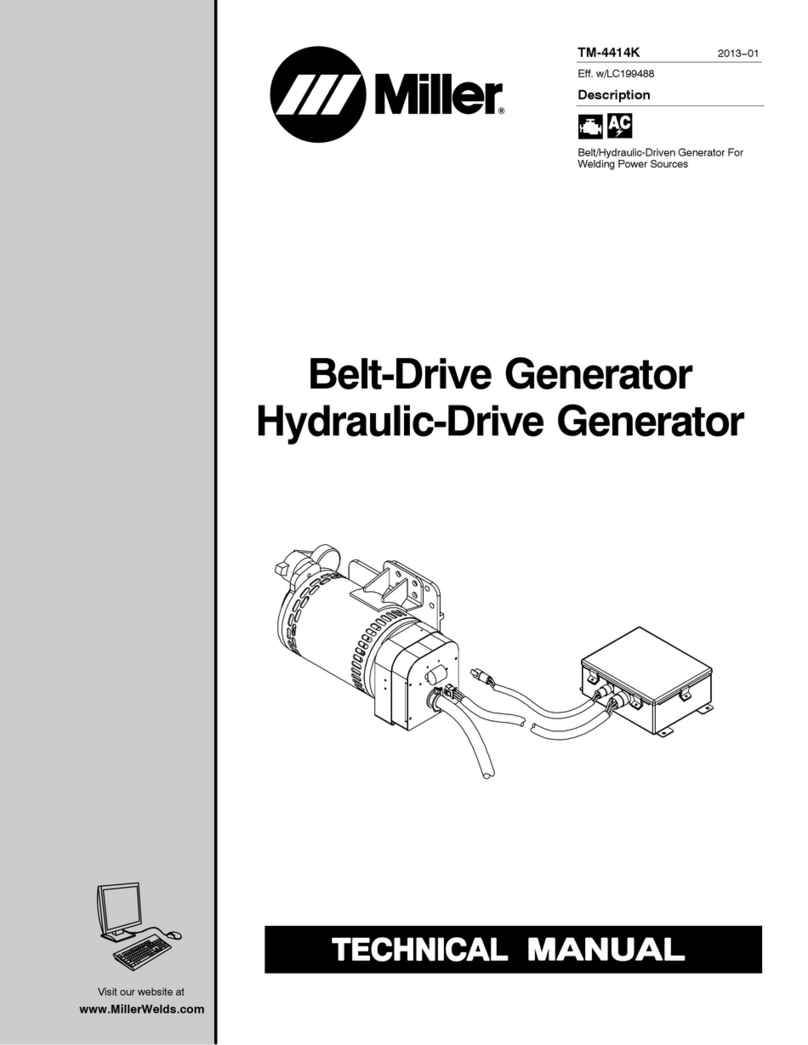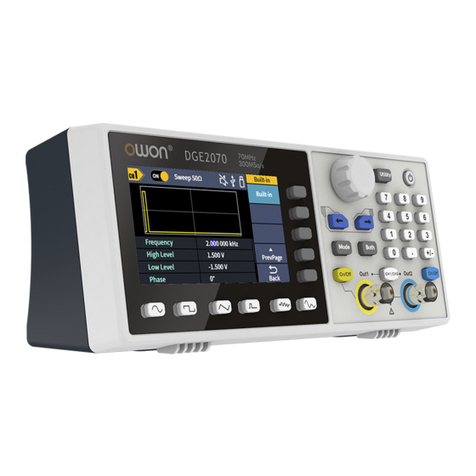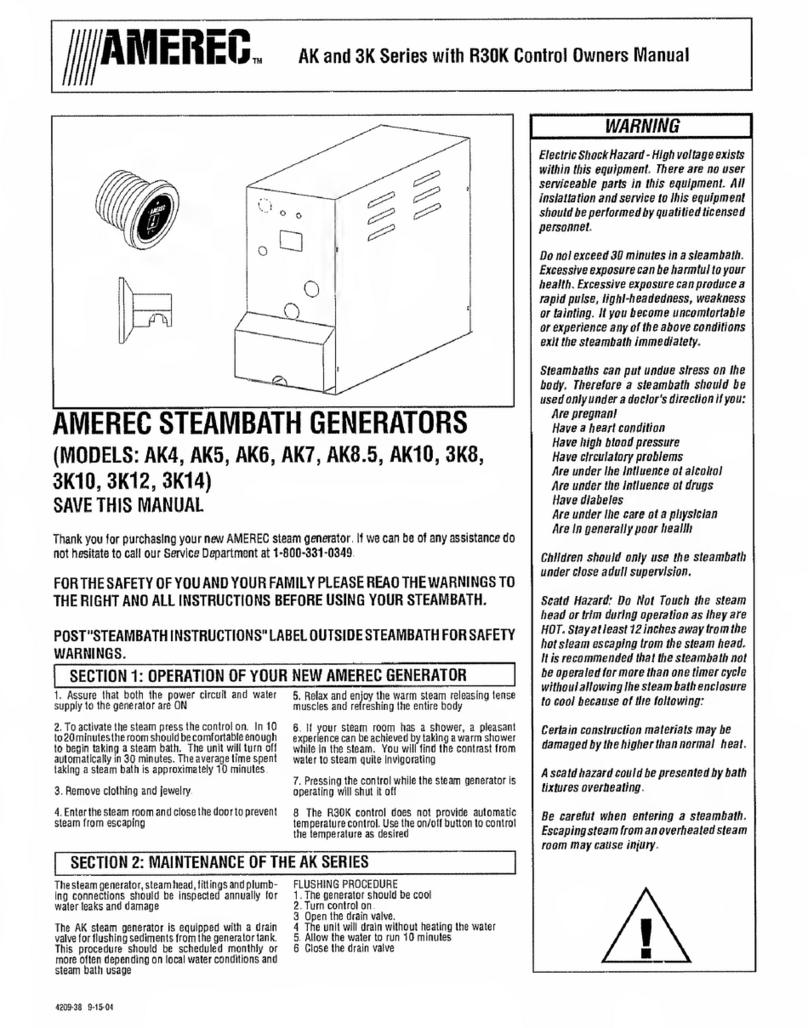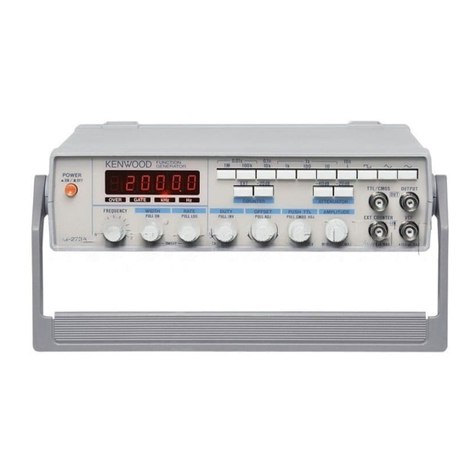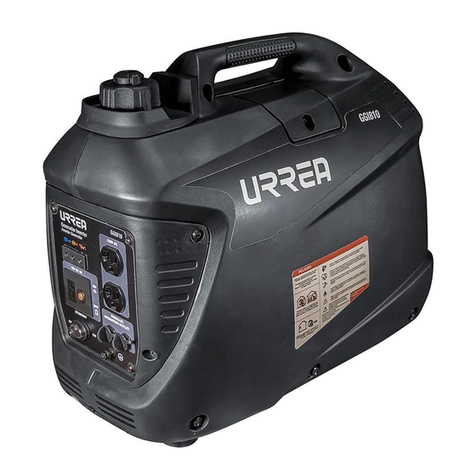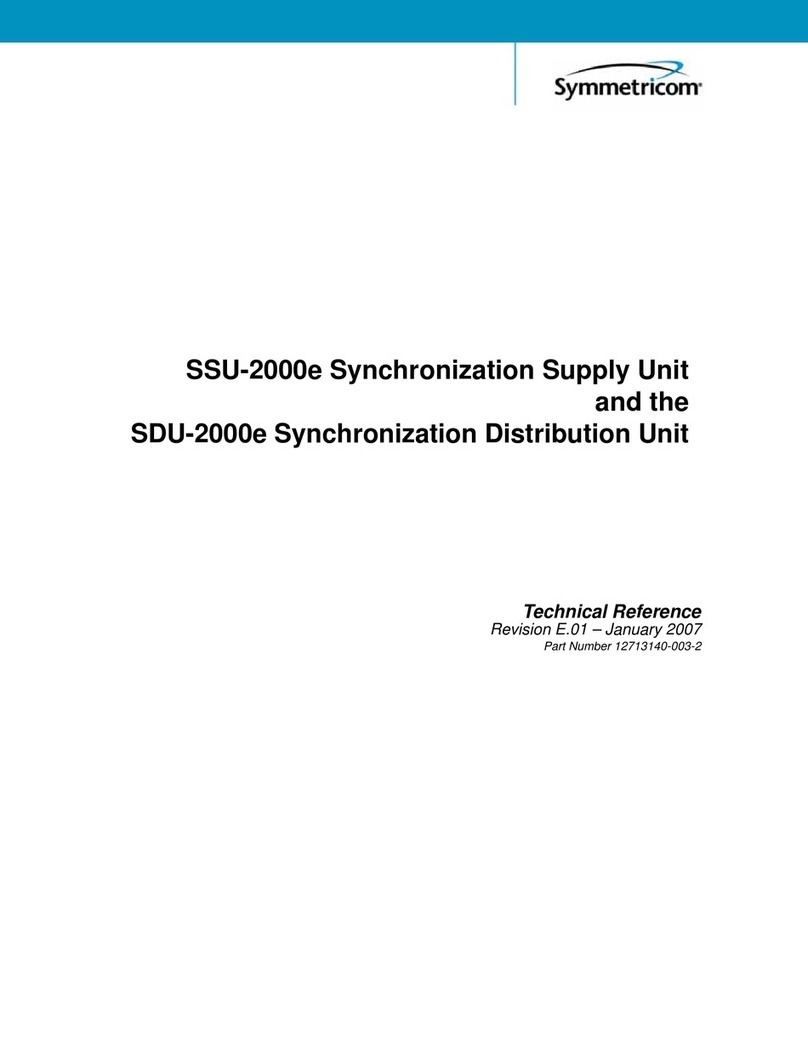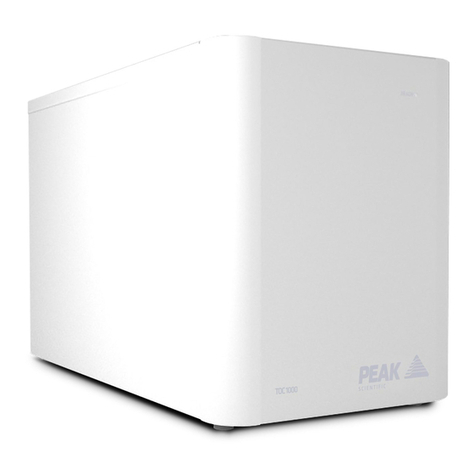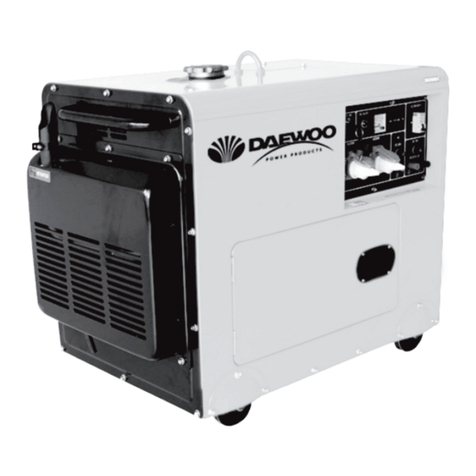Blueworks BLH Series User manual

1 | P a g e

2 | P a g e
BLUEWORKS BLH Series
ELECTRONIC CHLORINE GENERATOR
Installation and Operation Manual
IMPORTANT SAFETY INSTRUCTIONS
When using electrical equipment, basic safety precautions should
always be exercised, including the following:
Cautions:
Please note, the total working hours for the T-Cell should be less than
8 hours total per day. If you are using a variable speed pump for 24
hours a day be sure to adjust the chlorine output to 25-30%. If the
pump is only running 10 hours per day adjust the chlorine output
between 60-80%.
You can use this calculation to calculate the appropriate chlorine
output for your pool, suggest at 6 hours per day.
Pump running 24(Hours a day) *25% (Chlorine Output) =6hr (cell run time per day at 25%).
Pump running 20(Hours a day) *30% (Chlorine Output) =6hr (cell run time per day at 30%).
Pump running 15(Hours a day) *40% (Chlorine Output) =6hr (cell run time per day at 40%).
Pump running 12(Hours a day) *50% (Chlorine Output) =6hr (cell run time per day at 50%).
Pump running 8(Hours a day) *75% (Chlorine Output) =6hr (cell run time per day at 75%).
Start the VS pump on a low speed and kick the speed up until the salt
system works.

3 | P a g e
READ AND FOLLOW ALL INSTRUCTIONS
⚫Disconnect all AC power during installation.
⚫Do not permit children to use this product.
⚫A green-colored screw is located inside the wiring compartment,
against the back panel. To reduce the risk of electric shock, this
terminal must be connected grounded by connecting a continuous
copper wire, equivalent in size to the circuit conductors supplying
the equipment. Use the means provided in the electric supply
service panel to connect the terminal to the grounding.
⚫Includes one bonding lug for US models (two for Canadian models)
located on the external surface. To reduce the risk of electric
shock, connect the local common bonding grid in the area of the
swimming pool, spa, or hot tub to these terminals with an insulated
or bare copper conductor not smaller than 8 AWG US/6 AWG
Canada.
⚫All field-installed metal components such as rails, ladders, drains,
or other similar hardware located within 10 feet (3 meters) of the
pool, spa or hot tub shall be bonded to the equipment grounding
bus with copper conductors not smaller than 8 AWG US/ 6 AWG
Canada.

4 | P a g e
SAVE THESE INSTRUCTIONS
Table of Contents
OPERATION
General..................................................................................5
Water
chemistry.....................................................................5
Controls...............................................................................12
Maintenance........................................................................15
INSTALLATION
Mounting............................................................................17
Plumbing............................................................................18
Wiring.................................................................................20
TROUBLESHOOTING
Troubleshooting...............................................................24
WARRANTY

5 | P a g e
Warranty...........................................................................27
OPERATION
The BLH is an automatic chlorine generation system for pool & spa sanitation. The operation
requires a low concentration of salt (sodium chloride) in the pool water at levels low enough
that it normally cannot be tasted. The BLH automatically sanitizes your pool by converting
the salt into free chlorine, which kills bacteria and algae in the pool through a process called
electrolysis.
The BLH is designed to handle the purification needs of the average residential swimming
pool up to 40,000 gallons (150,000 liters). The actual amount of chlorination required to
properly sanitize a pool varies depending upon the bather load, rainfall, air temperature,
water temperature, pool’s exposure to sunlight, pool’s surface, and cleanliness.
Note: It is not recommended using the BLH to generate Bromine.
If your pool has natural stone as coping or decking, please check with a stone installation
specialist for the maintenance of the stone before installing the BLH.
WATER CHEMISTRY
As with any pool, you must maintain proper water chemistry of the pool water. Proper water
chemistry will include pH, alkaline content, and calcium levels. The only special requirement
for the BLH is to maintain proper levels of salt and stabilizer. It is important to maintain these
levels to prevent corrosion or scaling and to ensure maximum enjoyment of the pool, by
testing your water periodically. It is recommended that pool water is professionally tested a
minimum of twice per season. Your local pool store can provide you with the chemicals and
procedures to adjust the water chemistry. Be sure to tell the pool store that you are using a
salt-chlorine generator.

6 | P a g e
IDEAL CHEMICAL LEVELS
Salt
3000 to 4000 ppm
Free chlorine
1.0 to 3.0 ppm
pH
7.2 to 7.6
Cyanuric Acid
(Stabilizer)
50 to 100 ppm
Total Alkalinity
80 to 120 ppm
Calcium Hardness
200 to 400 ppm
Metals
0 ppm
Saturation Index
-.2 to .2
Saturation index
The saturation index (Si) relates to the calcium and alkalinity in the water
and is an indicator of the pool water "balance". Your water is properly
balanced if the Si is 0 ±.2. If the Si is below -0.2, the water is corrosive
and plaster pool walls will be dissolved into the water. If the Si is above
+0.2, scaling and staining will occur. Use the chart below to determine
the saturation index.

7 | P a g e
Si = pH + Ti + Ci + Ai - 12.1
℃
℉
Ti
Calcium
Hardness
Ci
Total
Alkalinity
Ai
12
53
.3
75
100
125
150
200
250
300
400
600
800
1.5
1.6
1.7
1.8
1.9
2.0
2.1
2.2
2.4
2.5
75
100
125
150
200
250
300
400
600
800
1.9
2.0
2.1
2.2
2.3
2.4
2.5
2.6
2.8
2.9
16
60
.4
19
66
.5
24
76
.6
29
84
.7
34
94
.8
39
103
.9
How to use: Measure pool pH, temperature, calcium hardness, and total
alkalinity. Use the chart above to determine Ti, Ci, and Ai from your
measurements. Insert values of pH, Ti, Ci, and Ai into the above
equation. If Si equals .2 or more, scaling and staining may occur. If Si
equals -.2 or less corrosion or irritation may occur.

8 | P a g e
SALT LEVEL
Use the chart below to determine the amount of salt needs to be added to reach the
recommended levels. Use the equations below to determine the size of your pool.
•The ideal salt level is between 3000-4000 ppm. (parts per million) with 3400 ppm
being the optimal level. Calculate the number of gallons in the pool and add salt
according to the chart on page10.
•A LOW salt level will reduce the efficiency and result in low chlorine production,
Gallons
(pool size feet)
Liters
(pool size in meters)
Rectangular
Length×Width×Average
Depth×7.5
Length×Width×Average
Depth×1000
Round
Diameter×Diameter×Average
Depth×5.9
Diameter×Diameter×Average
Depth×785
Oval
Length×Width×Average
Depth×6.7
Length×Width×Average
Depth×893

9 | P a g e
making the pool water unsafe for swimmers.
•Excessively HIGH salt levels will cause the BLH to shut down, making pool water
unsafe for swimmers.
Type of Salt to Use
It is important to use only sodium chloride (NaCl) that is 99% pure. This is a common food
seasoning or water softener salt available in 40-80-pound bags, at your local store. It is also
acceptable to use water conditioning salt pellets; however, it will take longer for them to
dissolve. Do not use rock salt in your pool water. It is recommended to use salt with more
than 1% of yellow prussiate of soda (sodium ferrocyanide), salt with more than 1% of anti-
caking additives, or iodized salt.
How to Add or Remove Salt
•IN GROUND POOLS: Turn the filter pump on and add the salt directly into the pool
at the shallow end.
•ABOVE GROUND POOLS WITH MAIN DRAINS: Add directly in front of the return
jet to pool. Run the filter pump for 24 hours with the suction coming from the main
drain (use the pool vacuum if there is no main drain) to allow the salt to evenly
disperse throughout the pool.
•ABOVE GROUND POOLS WITHOUT MAIN DRAINS: Add directly into the pool.
Brush the salt to speed up the dissolving process—to not allow the salt to sit in a
pile on the bottom of the pool. -------ELIMINATE THE FOLLOWING--(Run the filter
pump for 24 hours with the suction coming from the main drain (use the pool
vacuum if there is no main drain) to allow the salt to evenly disperse throughout
the pool).
DO NOT ADD SALT DIRECTLY TO THE SKIMMERS OR DIRECTLY INTO THE MAIN
DRAIN, ON ANY Pool. THIS WILL SHUT DOWN OR SHORTEN THE LIFE OF THE CELL
DUE TO HIGH SALT CONCENTRATION AND REDUCED FLOW TO THE PUMP.
If added incorrectly, immediately turn off the BLH for 24 hours with the pump and filter still

10 | P a g e
operating. This will help to evenly distribute the salt. The salt display may up to 24 hours to
respond to the change in salt concentration.
SALT DOES NOT EVAPORATE FROM POOL
The only way to lower the salt concentration is to partially drain the pool and refill with fresh
water.
POUNDS and (Kg) OF SALT NEEDED FOR 3400 PPM
Gallons and (Liters) of Pool/Spa water
STABILIZER (CYANURIC ACID)

11 | P a g e
Always test for stabilizer (cyanuric acid) level, when testing for salt. This test should be done
at least once per month. Use the chart below to determine how much stabilizer must be
added to raise the level to 80 ppm.

12 | P a g e
POUNDS and (Kg) OF STABILIZER (CYANURIC ACID) NEEDED FOR 80 PPM
Gallons and (Liters) of Pool/Spa water
POLYMERS:
It is advised to use polymers (commonly sold as poly algaecide) on saltwater sanitizing
systems. The poly algaecide is sold at 30% and 60% concentrations.
Application rate is 1 quart of Poly30 (or ½ quart of Poly 60) per 15,000 gallons (60,000 liters)
of pool water, per month. Apply directly in front of the return jet.
CONTROLS
MAIN SWITCH
•AUTO: For normal operation, the main switch should be left in the AUTO position.

13 | P a g e
In this position, the BLH will produce chlorine according to the “Desired Level %”
adjustment setting for the entire filtering / pumping cycle.
•SUPER CHLORINATE: When you have an abnormally high bather load, heavy
rainfall, cloudy water conditions, or any other condition which requires that a large
amount of purification be introduced, set the Main Switch in the SUPER
CHLORINATE position. This electronically “super chlorinates” (shocks) the water
for 24 hours (filter pump must be on during this time) or until the power has been
turned off, whichever comes first. At the end of the super chlorination period, be
sure to put the switch back into the AUTO position.
•OFF: The OFF position, prevents the BLH from energizing the electrolytic cell. In
this position there is no chlorine generation.
NOTE: In times of servicing, the OFF switch is not to be used. To service the BLH, turn the
power off the circuit breaker.
DESIRED OUTPUT LEVEL CONTROL
This setting is used to control the amount of chlorine the BLH generates. Adjust this setting
to increase or decrease the chlorine output level percentage. The reading is from 5 % output
to 100% output capacity of the BLH.
INDICATOR LED
•POWER: When illuminated solid, the BLH has input power.
•GENERATING: This LED is illuminated solid during normal operation. When
flashing, the pool water is too hot or cold to operate.
•SUPER CHLORINATE: Illuminates solid during Super Chlorination. See
description above for more information.
•REMOTE CONTROLLED: This part is controlled by a remote-control system.
•NO FLOW: When illuminated, the flow switch has detected no flow and the BLH
is NOT generating chlorine. A flashing LED indicates that the flow has been

14 | P a g e
restored, but there will be a 60-second delay before the generation is reestablished.
•CHECK SALT: When flashing, the salt level is low (below 2500ppm) and the BLH
is generating at low efficiency. When illuminated solid, the salt level is too low and
the BLH has shut down.
Note: Before adding large quantities of salt, it is advisable to have your salt level
professionally checked.
•HIGH SALT: When illuminated, the salt level is too high and the BLH has shut
down. The pool water must be diluted with fresh water before the system operation
is restored.
•INSPECT CELL: If flashing, either the cell efficiency is reduced, or it is time for
regularly scheduled cell inspection. In either case, inspect the cell and clean it if
necessary. Pressing the “diagnostic” button next to the display for 3 seconds will
stop the flashing LED. When illuminated steady, cell efficiency is greatly reduced
and the BLH has stopped producing chlorine. Inspect, clean or replace if
necessary.
SALT DISPLAY
The Salt Display shows the current salt concentration of the pool water. Readings are in ppm
(parts per million). If Metric units (grams per liter) are preferred, push the “diagnostic” button
next to the display once. The display will now show the pool water temperature in degrees
Fahrenheit. With the temperature displayed, move the main switch from AUTO to SUPER
CHLORINATE to AUTO. The temperature display will instantly change to degrees Celsius.
Repeat this process to switch back to USA units (Fahrenheit).
Diagnostic Displays
Sequential pushes of the small "diagnostic" button next to the LCD-display will
cause the system display the following information:
1. Pool temperature (xx degrees Fahrenheit or Celsius)

15 | P a g e
2. Cell voltage (typically 21.0 to 27.0 volts when chlorine is being generated, otherwise 16-
25V)
3. Cell current (typically 2.50 to 7.80 amps when chlorine is being generated, otherwise 0
amps)
4. Desired Output % ("0%" -- "100%" depending on knob position or input from remote pool
automation controller)
5. Instant salinity (-XXXX ppm) or (-X.XX grams/Liter)
6. Product name sent to the pool automation control display
7. Software revision level
8. Cell type.
On the 8th push of the button, the display will revert to the original default salt display. Also,
if the button is not pushed for 30 seconds, the display will revert to the original default salt
display.
OPERATION
By familiarizing yourself with the operation of the BLH generator, you can achieve maximum
performance for your pool. When chemical levels are in the recommended range, there are
FOUR factors that you can control. These factors will directly impact the amount of chlorine
the BLH will generate.
•Filter time each day (hours)
•The amount of salt in the pool
•The “Desired Output Level %” setting
•Stabilizer level in the water.
To find the optimum “Desired Level %” setting, start at a high setting and work downward. It will
take a few days of adjustments to find the ideal setting for your pool. Once determined, it should
only take minor adjustments to maintain the ideal setting. The BLH control will not produce chlorine
at temperatures below 50’F If your pool water is colder than 50’F, you must chlorinate manually.
Maintaining the System
To maintain maximum performance, it is recommended that you remove and visually inspect
the cell every 3 months. The BLH will remind you to do this by flashing the “Inspect Cell” LED

16 | P a g e
after approximately 500 hours of operation. After you inspect the cell (and clean, if necessary)
press the small “diagnostic” button next to the display for 3 seconds to stop the flashing
“Inspect Cell” LED and start the timer for the next 500-hour inspection period.
The BLH electrolytic cell has a self-cleaning feature incorporated into the electronic control’s
logic. In most cases, this self-cleaning action will keep the cell working at optimum efficiency.
In areas where water quality is hard (high calcium and/or mineral content) and in pools where
the water chemistry has gotten “out of balance”, the cell may require periodic cleaning. The
“Inspect Cell” LED remains on after a thorough cleaning, the cell may be worn and may
require replacement.
Servicing and Cleaning the cell
•Turn off power to the BLH before removing the CELL.
•Once removed, look inside the cell and inspect for scale formation (light-colored
crusty or flaky deposits) on the plates and for any debris that has passed through
the filter and gotten caught on the plates.
•If no deposits are visible, reinstall. If deposits are still visible, use a high-pressure
garden hose and try to flush the scale off. If this is not successful, use a plastic or
wood tool to scrape deposits off and remove from the plates. DO NOT USE A
METAL SCRAPER AS THIS WILL SCRATCH THE FINISH AND DAMAGE THE
PLATES. Note that any buildup on the cell indicates that there is an unusually high
calcium level in the pool (old pool water is usually the cause). If this is not corrected,
you will need to clean the cell more frequently. The simplest way to avoid this is to
bring the pool chemistry to recommended levels, as specified.
Mild Acid Washing:
Use only in severe cases where flushing and scraping will not remove majority of deposits.
To acid wash:
•Turn off power to BLH.
•Remove the cell from the piping.
•In a clean plastic container, carefully mix a 4:1 solution of water to muriatic acid

17 | P a g e
(one gallon of water to one quart of muriatic acid).
ALWAYS POUR ACID INTO WATER-NEVER POUR WATER INTO ACID.
BE SURE TO WEAR PROTECTIVE GLASSES, CLOTHING, AND CHEMICAL
RESISTANT GLOVES
•The level of the solution in the container should just reach the top of the cell so
that the wire harness compartment is NOT submerged. It may be helpful to coil
the wiring before immersing the cell.
•The cell should soak for FIVE minutes, then rinse with a high-pressure garden
hose.
•If any deposits are still visible, repeat soaking and rinsing.
•Replace cell and inspect again periodically.
Winterizing
The BLH electrolytic cell and flow detection switch will be damaged by freezing water, like
similar other pool components that require proper winterization. In areas of the country that
experience severe or extended periods of freezing temperatures, be sure to drain all water
from the pump, filter, and supply and return lines before any freezing conditions occur. The
electronic control can withstand any winter weather and should not be removed.
Spring Start-up
DO NOT turn the BLH on, until the pool water chemistry has been balanced to proper levels.
INSTALLATION
Installation must be performed in accordance with and by following the Local NEC
codes.
Preparing Pool Water:

18 | P a g e
The pool’s chemistry must be balanced BEFORE activating the BLH. It is recommended that
you consult a pool professional for the initial balancing each season.
NOTE: At the beginning of each season, add metal remover and polymer-based algaecide
to the pool, per manufacturer’s instructions. This ensures a quick, trouble-free transfer to the
BLH system.
Mounting the BLH Control
The BLH is contained in a rain tight enclosure that is suitable for outdoor mounting. The
control box must be mounted a minimum of 5 ft. (2 meters) the horizontal distance (or more
if local codes require) from the pool/spa.
The control box is designed to mount vertically on a flat surface with the knockouts facing
downward. Since the enclosure also acts as a heat sink (disperses heat from inside the box),
it is important not to block the four sides of the control unit.
Do not mount the BLH in a panel or tightly enclosed space.
Plumbing
Ensure that the BLH installation does not constitute a cross-connection with the local potable
water supply, by consult local plumbing codes.
The cell and flow switch are plumbed in the return line to the pool. Install after (downstream)
all the pool equipment (filter, heater, solar, etc.). The kit included in the BLH provides the
necessary plumbing components for:
•2” (51mm) rigid PVC piping installation for in-ground pools
•1 1/2-1 1/4〞(38-32mm) flexible hose connections for above ground pools
For proper plumbing, refer to the overview diagram below
Flow switch:

19 | P a g e
IMPORTANT: To ensure proper operation, verify that the arrow on the flow switch (located
on the side) points in the same direction of water flow.
Electrolytic Cell:
Install using the unions provided. Tighten these by HAND for a watertight seal. For pool/spa
combination systems with spillover, use configurations #2 or #3 below to allow chlorination
for both the pool and spa during spillover but preventing over chlorination when operating
the spa only.

20 | P a g e
Wiring
Power must be turned off at the circuit breaker before performing any wiring. Be sure to
follow Local and NEC electrical codes. To provide safe operation, the BLH must be properly
grounded and bonded.
Input Power for stand-alone operation:
Wire the BLH to the LOAD SIDE of the filter pump timer. The BLH being powered only when
the pump is running is extremely important.
Refer to the wiring label on the BLH as well as the diagram below, to determine correct wiring
connections. The BLH is shipped from the factory with the configuration jumpers in a
separate bag. Until the jumpers are installed for the desired voltage, the unit should NOT be
Other manuals for BLH Series
1
Table of contents
Other Blueworks Portable Generator manuals
